Introduction
The 150th year anniversary of Sir R.F. Burton and the Speke East Africa expeditions’ (1857-59) discovery of the Tanganyika and Victoria lakes has been celebrated in 2008 (Fig. 1).

Fig. 1 – LakesVitctoria and Tanganika discovered by Burton and Speke 1858 – Stamp
(Source: http:/Burtoniana.org)
This event is conceptually connected to both the Ólafur Elíasson’s (2008) The New York City Waterfalls [2] art project and the Yõko Ono’s Imagine Peace Tower (2007) art project in Iceland (Fig. 2) .
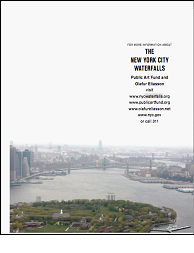
Fig. 2 – The New York City Waterfalls, Ólafur Elíasson, June 28-Oct. 13, 2008
(Source:http://www.nycwaterfalls.org/sections/about/waterfalls_brochure.pdf)
The link is made by the Iceland on the brain concept elaborated by Sir R.F. Burton in Ultima Thule; or, a summer in Iceland (1875; preface) [3].
Landscape nostalgia is at the roots of both Sir R.F. Burton’s and Ólafur Elíasson’s works.
Cultural Landscape
Landscapes treasure past, frame current and affect future environmental, socioeconomic and cultural change. Assuming that landscape is made of what is visible has more than one implication. What does it mean for landscape to be visible? Visible by whom and from where? The last centuries increased use of images makes these questions necessary. Cinema, colour printing systems, satellite pictures and the internet have all contributed to speeding up the circulation of images as well as stimulated and widened imagination. As custodians of the time-space interface and of the sense of place, landscapes also encourage our territorially steered memories, emotions, perceptions and knowledge, as well as our interests, decisions and actions.
At the beginning of the 20th century both flight technologies and the diffusion of electricity have dramatically changed the perception of landscape as well as its representation. As a consequence, cultural landscape changed and its manipulation became a common practice. In this context, landscapes are the media through which the existing and emerging identity features of places and regions are generated, recorded, assumed and claimed. In short, landscapes are constitutive elements and factors of changing territorial identities.
In the 1940’s, designer and cartographer R.E. Harrison understood the potential impact of the bird eye vision and indirectly concurred in modifying the landscape concept [4]. He used a new and unconventional point of view. His innovative maps were published monthly by Fortune Magazine and in Look at the World: The Fortune Atlas for World Strategy [5]. As a consequence of a new landscape perception cartography changes as well. Harrison’s zenithal projection showed an unusual landscape. In his three dimensional maps as in those of cartographers of the 16th century, mountain profiles were painted onto the profile of the globe. This way of seeing the world, previously made popular by the catholic western vision, had until then been the prerogative of god, angels and saints. This zenithal vision has been well represented in both sacred paintings and frescos. In 19th century, man entered the upper spaces until then considered sacred, and transformed his perception of places. Marc Chagall’s and Osvaldo Licini Amalasunte’s dreamlike landscapes are an example of the ongoing change in landscape perception. A new vision which has anticipated John Lennon’s song Imagine [6].
As a result of this new way of dealing with landscape R. Harrison emotionally reached President Roosevelt’s New Deal America and gave an example of hegemonic use of landscape. Meanwhile – as a consequence of a more and more technological official cartography – ontological landscape elements acquired flatness and conventional colouring while conventional contour lines became a distinguishing feature of landscape representation.
Iceland on the brain
At the turn of the 19th century, a new organization of both global space and global time emerged: the conventional time zones. Industry as well the construction of the extended American rail road system needed workers. Migratory waves of workers brought people from Europe to North America as it also had happened with the previous slave traffic from Africa. The emergence of a new middle class ends in a new expressivity.
Exploration of the continents has begun. Von Humboldt with his expeditions chronicles (1798-1804) to the equinoctial regions opened new frontiers for the geographic and colonialist culture at the beginning of the 19th century. In the same context Sir R.F. Burton (1821-1890) travelled to Africa, India and Near East. During his East African expedition (1857-59) the Tanganyika and Victoria lakes were discovered. Almost fifteen years later (1873) he travelled to Iceland. In his book Thule; or, a summer in Iceland (1875, 2 volumes) he delivered a great quantity of deluded comments about the destination. The most cited and significant, of those comments stands in the book’s preface: Travellers of the early century saw scenes of thrilling horror, of majestic grandeur, and of heavenly beauty, where our more critical, perhaps more cultivated, taste finds very humble features. They had “Iceland on the brain” [3 p. X]. Burton derided the imagination of those who (…) found the landscape thrilling, in his opinion, the only people who were entranced by Iceland where those who had limited experience outside their own country [7]. Burton seemed persuaded that only the other travellers take with them a preconceived idea of Iceland, but in the preface of his book he expressed at least three statements which are in conflict with this assumption:
– The subject (Iceland) is, to some extent, like Greece and Palestine, of the sensational type: we have all read in childhood about those “Wonders of the World”, Hekla and Geysir, and, as must happen under the circumstances, we have all drawn for ourselves our own Iceland – a distorted and exaggerated mental picture of what has not met, and will not meet, the eye of sense [3 p. IX]
– I (Burton) went to Iceland feeling by instict that many travellers had prodigiously exaggerated their descriptions, possibly because they had seldom left home [3 p. X]
– A friend described to me life in Iceland as living in a corner, the very incarnation of the passive mood; and travelling there as full of stolid, stupid risks, that invite you to come and to repeat coming, not like the swiftly pursuing or treacherously lurking perils of tropical climes, but invested with horror of their own – such was not my experience. [3 p. X, XI].
In a way, Burton admitted and denied, within the same text, his preconceived mental image of Iceland.
The Icelandic cultural landscape
There are places where the supernatural, even if well apart from fate and religious practice, is somehow inscribed in the landscape. They are those places and spaces where human settlement is rare and where the genius loci is more often a personal rather than a collective experience. In this kind of deserted sandy or icy landscape, specifically the Icelandic landscape, human survival depends on the aptitude to read landscape and interpret sounds, odours/scents and colours. In this kind of landscape, human survival can be betrayed by an erroneous perception of reality. Senses involved in landscape perception may be thwarted by extreme conditions of nature and amplified by the constant need to remain alert against disorientation, frost, fatigue, wind, light, darkness and possible starvation, as a means of survival. Because of these features a new landscape arises: the parallel world landscape. The invisible peoples (huldufólk) landscape hidden in the visible cultural landscape is definitely a peculiar type of Icelandic cultural landscape.
In 2006 film maker Nisha Inalsingh, presented the documentary titled Huldufólk 102 [8] (Fig. 3). In it she iterviews people (e.g. teachers, historians, farmers, film makers, folklore researchers etc.) regarding the existence of a parallel universe and recounts the interesting and charming landscape related aspects of the Icelandic culture.
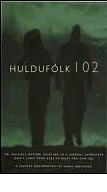
Fig. 3 – Huldufolk 102
(Source http://www.huldufolk102.com/home.html)
She says that the movie“(…) is about an idea. How often do you see a documentary that’s about an idea? They are usually about a person or an event or a place, and here we are looking for something that in reality may or may not exist. (…) The charm of the film lies in a blend of breathtaking beautiful scenary worthy of a travel film and the way the Icelandic believers are presented as perhaps eccentric, but never delusional. We get a nice mishmash of history, folklore and first-hand encounters. In the end the impression is of the rare place where the proponents of Christianity were never able to entirely destroy the old gods and beliefs and wisps of Norse goddess Freya still hang in the air. The soundtrack backs up a deliberately ethereal feel. That feeling you get in Iceland, the isolation and also this idea of really being in nature and with nature, we have to be there and get the whole crew feeling that [9]. The documentary is presented on the net with the following words: Beneath the quiet veneer of Iceland lies an invisible nation of huldufólk (hidden people). This fascinating phenomenon, rarely discussed with outsiders, not only pervades Icelandic culture, but also impacts its infrastructure (e.g. road construction and buildings).
(…) Winter’s darkness allows the dazzling and supernatural Northern Lights to pervade the country with its amorphous shapes; casting brilliant colours of yellow, pink and green downward to the land below. Black lava rocks, green mossy rocks, geysers, volcanoes, and glaciers all play their role in this mystical landscape, where the wind snow and light show the power of nature. This spectacular displays reveal the paradoxes that man must contend with-the simplicity of things that we see on a daily basis versus the complexity of things we are unable to see within the world [8].
In the Icelandic landscape the cultural aspect is not only determined by the visible landscape but it includes all kind of related energies.
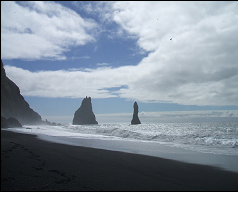
Fig. 4 – Vík (South Iceland) from Reynishverfi
(M.S. Campanini, 2006)
The understanding of the Icelandic cultural landscape relies on syntonic vibration of sounds and colours waves, as well as light waves, soils magnetism and poisonous gas or vaporous soil exhalations (Fig. 4, 5, 6). All these phenomena are well described by some of Iceland’s painters, like Kjarval, who depicted the elusive and mysterious sense of the lava fields in his painting.

Fig. 5 – Námaskard, Iceland:
(M.S. Campanini, 2006)
The need of orienting oneself in space and time is primary for humankind. Interpreting landscapes depends on cultural categorizations. The latitude of places and spaces plays a key role in the process. Landscape perception involves the interaction of the five senses generating an emotional response which is then filtered by cultural assumptions. Due to the climate change, at the beginning of the 21st century, the newly acquired accessibility to the Arctic region, until then considered marginal, disclosed the conception of new landscapes. The conception of these marginal landscapes emphasizes both sounds and colours and the need to understand the richness of the native cultural landscape.

Fig. 6 – Búlanstíndur, Iceland
(M.S. Campanini, 2006)
Global village landscapes
The modern globalized world, is in part the result of 20th century technological improvements in the field of transportation, which changed the economic value of spaces. This along with the impressive escalation of the media culture’s dissemination (e.g. press, television, cinema, internet etc.) has paved the road for a large scale migrating landscapes phenomenon. Cultures are nowadays influenced and somehow touched by the landscape other by several means:
– exoticism travel offers
– information events
news
documentaries
– entertainment movies
image projection
imaging
– memory sharing migrants (immigrating and returning home)
travel industry
These influences satisfy the human need to appropriate somebody else’s landscape and sense of belonging to a peculiar landscape.
Active and passive actions are part of the two steps paradigma process:
1 – acquisition of a landscape (it is part of my acquired culture)
– I know it passive action
– I’ve been there active action
– I’ve seen it active action
2 – sense of belonging to a landscape (it is part of the acquired culture)
– it is the cultural landscape of my origins
. to which I go back when possible
. from which I come
. from which I ran away
. for which I feel nostalgia
– it is the cultural landscape in which I recognize my cultural identity
All together these migrating landscapes evolve into both place and space social representation, as a shared landscape. In few words the phenomenon develops a dynamic of the genius loci based on the emotional need to evoke and materialize a mental genius loci. Little difference stands between the original and its representation.
Due to their ability to evoke emotion, images of landscapes are now being marketed by the media and advertising industry in order to sell products such as cars, life insurance, telephones etc. This type of marketing boomed in the last two decades of the 20th century. The automobile industry for example often uses scenes of Iceland’s uninhabited landscape to advertise cars.
Landscape nostalgia
In 1937 W.H. Auden e Luis Mac Neice, back home from a travel to Iceland, sponsored by their publisher, wrote Letters from Iceland [10]. In this epistolary book MacNeice writes a poem to his travel mate in which he says:
…you replied
That the North begins inside,
…[10]
How much is this intuition true? Can it be universally accepted? Answering it is difficult. Sir R. F. Burton in his two volumes book Thule; or, a summer in Iceland made evident his estrangement, which was probably difficult for him to identify. As a matter of fact, while trying to diminish the prodigious Icelandic landscape, he keeps on confronting it with the landscape of places previously visited.
What is the origin of this obsessive need to compare? The uniqueness of the genius loci makes the place. Being in a place, and especially being in Iceland, activates space and time related senses. Burton was instead disinterested to find both alpine flora and glaciers on the sea level and 24 hour sun light which put man in the centre of the sun dial. He compared the Icelandic experience with previous ones ignoring that they are filtered by a different circadian rhythm . Burton seemed to be imprisoned in a chaos of rigidly, mentally catalogued landscapes collected during his life of adventure and travel. Burton’s brain was contaminated by landscapes. Is it possible to suffer from overexposure to landscape?
Danish-Icelandic artist Ólafur Elíasson’s approach is different. In each of his works he expresses the Icelandic-ness of his DNA. Elíasson has totally interiorized the surprising fickleness of the Icelandic landscape which enabled him to transform it into a cultural art product. His astonishing art works are inspired by the cheated senses (senses bewildered by extreme weather conditions). They are samples of migrated Icelandic cultural landscapes. The New York City Waterfalls project, with its four waterfalls, reproduces the Icelandic need to contaminate the others landscape with the Icelandic one (Fig. 7, 8).
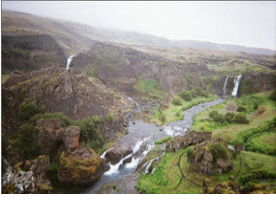
Fig. 7 – Waterfalls in Thjórsádalur, Iceland
(M.S. Campanini, 2006)

Fig. 8 – The New York City Waterfalls (Ólafur Elíasson, June 28-Oct. 13, 2008) are on display at four waterfront locations in Lower Manhattan, Brooklyn and Governors Island.
(Source:http://www.nycwaterfalls.org/sections/about/waterfalls_brochure.pdf, p. 6)
In the New York Waterfall project – the exhibition of four man-made waterfalls of monumental scale are on view until October 13 at four sites on the shores of the New York waterfront: one on the Brooklyn anchorage of the Brooklyn Bridge; one on the Brooklyn Piers, between Piers 4 and 5 near the Brooklyn Heights Promenade; one in Lower Manhattan at Pier 35 north of the Manhattan Bridge; and one on the north shore of Governors Island [11] – the artist plays with the topos and the names of places. The word island in the Governor Island (North Shore) name may be read in both English and Icelandic languages. Iceland in Icelandic is Ísland, the name of the island from whose cultural landscape the project is derived. The Icelanders’ need to anchor their space-temporal orientation to peculiar landmarks became evident at the beginning of the 20th century when the state owned ships were named after waterfalls. The location Elíasson chose for his project in New York is on the East river which is part of the New York harbour Estuary system. That means it is a place where fresh water (from the Hudson river) and salt water (from the Atlantic Ocean) meet. The location simulates, in some way, a typical Icelandic phenomenon: the confluence of the icy waters of glacial rivers with fresh water rivers (e.g. the confluence of the river Sogn in Jökullsá in southern Iceland). A similar inspiration and emotion arises also from another art work by Elíasson: the Green river (1998) (Fig. 9).
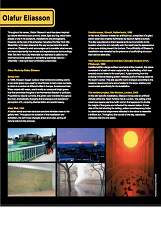
Fig. 9 – The New York City Waterfalls, Ólafur Elíasson, June 28-Oct. 13, 2008
(Source:http://www.nycwaterfalls.org/sections/about/waterfalls_brochure.pdf, p. 4)
Ólafur Elíasson’s art stresses how light makes visible or invisible landscape features, modifies colours perception and switches on the epyphisis: the biological watch which ties the body to the environment/habitat. The gland seems to have a regulatory function that lets the body survive in all kind of different habitats. This happens through the hormonal secretion of melatonin which works as biological synchronizer and is rhythmically secreted (starting from the syntesis of serotonin) following the light and dark (day and night) alternation [12].
As told by MacNeice and ignored by Sir Burton: the North begins inside! [10]
Landscape for peace
The icelandic imaginable landscape has been widened by two events: the construction of the Hring vegurinn (Road n° 1) finished in 1974 and the 200 nautical miles of Exclusive Economic Zone (EEZ) that Iceland obtained in 1975 [13].
Both events moved the landscape perception from the horizontal to the three levels vertical axis: the sea bottom, the island surface, the space above [12] (Fig. 10). The point of view on landscape was renewed. The cultural approach as well.
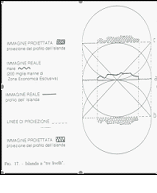
Fig. 10 – The three levels vertical axis of Iceland
(Source: Studi Urbinati, 1993)
The mix of cultural landscapes (sea, land and sky) derived from this new viewpoint is vertically crossed by the four primordial elements: fire (magma and eruptions), earth (formed by emerged magma), water (ice generating rivers and sea), air (sky, clouds and winds).
Due to its strategic location during the Cold War era, and to renewable energy resources such as hydroelectric and geothermal energy, Iceland gained acces to the world geopolitic scenario.
On October 9th, 2007 John Lennon’s birthday was commemorated in Iceland by Yõko Ono with a work of art. Imagine Peace Tower is the work of art she dedicated to him [15]. With her work Yõko Ono has enlighted, switched on, the landscape giving visibility to Lennon’s dream of peace for our globalized world [16] (Fig. 11).
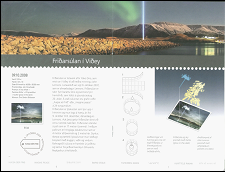
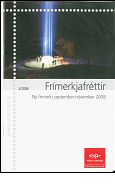
Fig. 11 – Stamp Imagine Peace Tower, October 9, 2008
(Source: Frímerkjafréttir 3/2008 Iceland Post, Reykjavik)
Her work, as she explains in her web page’s You Tube video, is inspired by both the Icelandic nature and the architectural elements of a recently man-made Icelandic landscape.The heat of the ground is transformed into light to penetrate the sky. Yõko Ono’s work makes visible also the theory of the three levels vertical axis of Iceland and transforms the high temperature magma heat in a peaceful spear of light.
Iceland is now seen as a tower of peace in the panarctic landscape. In Agust 1941 Harrison conceived the Arctic zenithal projection which generated the comprehensive map titled One World One War [17]. The same projection was later used to elaborate the UN flag. It is now time to change the title of the map into One World One Peace. John Lennon defined himself as a dreamer.
…
You may say I’m a dreamer
… [18].
Yõko Ono gave ontological form (visibility) to a dream. Iceland is facing a critical moment in its overall weak economic history. It is time to dream and free new energies. Due to the near default of the Icelandic economy (october 2008) for many people in Iceland everything seems lost. Yõko Ono’s art work might appear as a life-belt.[19, 20] (fig. 12, 13).

Mostra fotografica

Fig. 13 – New year’s eve in Bessastadir (Jan. 2010)
(Source: Süddeutsche Zeitung, 2010 Nr. 2 / Seite 15)
Quoting Lennon’s song Imagine, Icelanders are solicited to elaborate a new cultural landscape and become actors of peace:
…
Imagine there’s no heaven
It’s easy if you try
No hell below us
Above us only sky
Imagine all the people
Living for today
… [18].
At the turn of the new Millennium, new global economic and cultural landscapes arise from the Arctic, the top of the world. The key of a globalized peaceful future stands on the concept of time 0 and space 0, The point (place) where meridiens as well as time zones virtually start.

The point (place) where meridiens as well time zones start
A new deal can arise from the Arctic core (where time and space originate). Iceland, strategically located in the Atlantic corridor which accesses the Arctic Ocean, plays a new role [22]. The country which hosted the Reagan-Gorbachev historical meeting in 1986, should now (almost thirty years later) be able to promote peace by means of its landscape features. Iceland, the terrestrial guardian of the two marine corridors which give access to time 0 and space 0, should offer humanity its imagined landscape for peace.
Conclusions
According to Burton, Auden, MacNiece, Kjarval, and Elíasson the dialogue with landscape is very personal and intimate. It may include or ignore the rhythms of nature and their alternation. Ólafur Elíasson in New York (MOMA, SP2 and New York City Waterfalls) stresses the two-way dialogue between art and cultural landscape:
– cultural landscape activated by art
– art contaminated by landscapes natural features.
Yõko Ono, in the Imagine peace tower, stresses the power of land art as a landscape element to promote peace. Peace is the new Icelandic genius loci. The world changes, but again and again landscape, art and the written word will appear to be tied together by aspects of the personal and collective identity as well, as the personal and collective perception of landscapes.
You may say I’m a dreamer
But I’m not the only one
I hope someday you’ll join us
And the world will be as one
Imagine no possessions
I wonder if you can
No need for greed or hunger
A brotherhood of man
Imagine all the people
Sharing all the world…
You may say I’m a dreamer
But I’m not the only one
I hope someday you’ll join us
And the world will live as one
… [18].
REFERENCES
[1] http://burtoniana.org, (accessed on January 28, 2010)
[2]http://www.nycwaterfalls.org/sections/about/waterfalls_brochure.pdf, (accessed on January 28, 2010)
[3] Burton, R.F. (1875) Ultima Thule; a summer in Iceland, Vol. 1 – 2, W.P. Nimmo, London (Preface Vol. I, p. X)
Google digital copy: ref. 1.267.061 Library of the University of Michigan, accessed on 28 Jan., 2010
[4] Schulten, S. (1998) Richard Edes Harrison and the challenge to American cartography in Imago Mundi: The International Journal for the History of Cartography, 1479-7801, Vol. 50, Issue 1, pp. 174-188
[5] Knopf, A.A. (editor) (1944) Look at the world: The Fortune Atlas for World Strategy, New York
[6] Lennon, J. (1996) Imagine: a celebration of John Lennon, Penguin Studio Books, New York
[7] Oslund K. (2005) The “North begins inside”: imagining Iceland as wilderness and homeland in the GHI Bulletin n. 36 (Spring 2005), (p. 92)
[8] http://www.huldufolk102.com/home.html (accessed on January 28, 2010)
[9] Arpe M. (2006) A little trip into the mystic. Toronto Star, October 27, 2006
[10] Auden W. H., MacNeice L. (2002) Letters from Iceland, Faber and Faber, London
[11]http://www.publicartfund.org/pafweb/projects/08/eliasson/eliasson-08.html (accessed on January 28, 2010)
[12] Foster, R. Kreitzman, L (2007) I ritmi della vita. Gli orologi biologici che controllano l’esistenza di ogni essere vivente (original: Rhitms of Life, 2004), Longanesi, Milano
[13] Jónsson H. (1982) Friends in Conflict . The Anglo-Icelandic Cod Wars and the Law of the Sea, C. Hurst and Co Ltd, London
[14] Campanini. M. S. (1993) Percezione del territorio islandese attraverso le metafore dell’ultimo millennio (da Snorri Sturlusson a Einar Jónson) in Studi Urbinati, B Geografia p. 25-53), Quattroventi, Urbino, p. 48
[15] Friðarsúlan í Viðey in Frímerkjafréttir Ny Frímerki september-nóvember 2008, 3/2008 Iceland Post, Reykjavik, p. 6-7
[16] Lennon J., Ono Y., Sheff D., Golson G.B. (1981) The Playboy interviews with John Lennon and Yõko Ono, Playboy Press, New York
[17] Klinghoffer, A. J. (2006) The power of projections: how maps reflect global politics and history, Greenwood Publishing Group, Boston
[18] http://www.john-lennon.com/songlyrics/songs/Imagine.htm(accessed on January 28, 2010)
[19] Insel des Feuers, (2010) Wirtschaft, Süddeutsche Zeitung Nr. 2/Seite 15, Munchen
[20] Karlsson, J.MS. (2009) Revolution – Mostra fotografica (Bartolucci. M. editor), Roma
[21] Campanini M. S. (2005) Three Posters, Borgo del libro, Cavi, (p. 2)
[22] Campanini M.S. (2009) Spazio e Tempo sul planisfero. Il punto di vista non è univoco. Suggestioni per un PERCORSO DIDATTICO POLARE CON TRAUSTI VALSSON, p. 85-112 in Campanini M.S. a cura IPY 2007-2008 Esperienza transnazionale per il Laboratorio di Didattica della Geografia, Lampi di Stampa Messaggerie, Milano
[23] Atlante Geografico (2007) Grandi tascabili Istituto Geografico De Agostini (p. 105 modified) Novara: Istituto Geografico De Agostini

